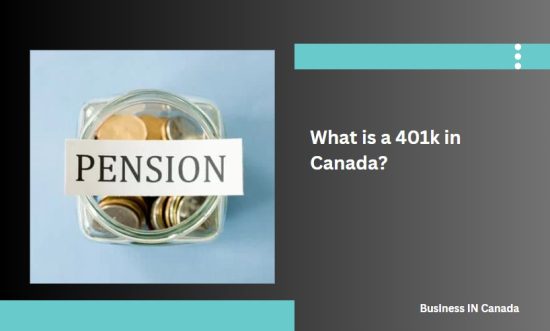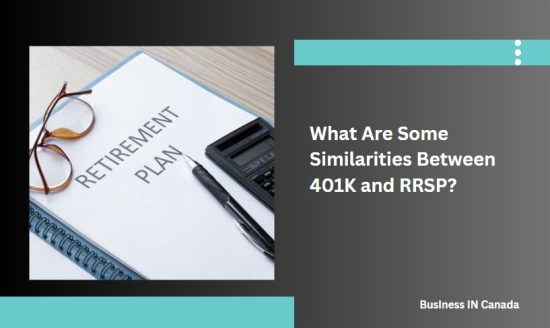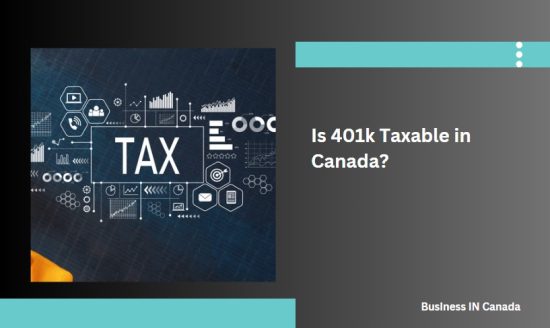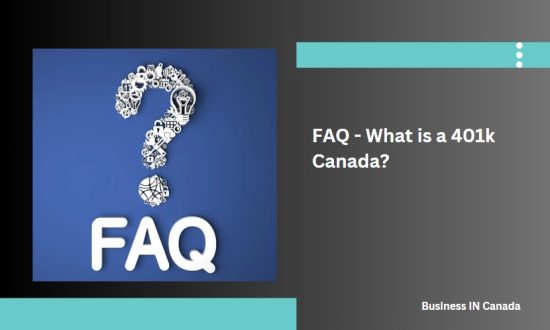Retirement savings plans can be confusing, especially if you’re unfamiliar with the different types available in your country. As a Canadian citizen, you may have heard of 401k accounts when researching retirement options. But what exactly is a 401k in Canada? And how does it compare to other popular retirement accounts like the Registered Retirement Savings Plan (RRSP)? In this blog post, we’ll dive into everything you need to know about 401k Canada – from its similarities and differences to RRSPs, tax implications and more!
What is a 401k in Canada?

A 401k is a retirement savings plan allowing employees to contribute a portion of their pre-tax income into an investment account. This account grows over time and can be withdrawn for retirement purposes. In Canada, however, there is no such thing as a “401k.” Instead, Canadians have the option to invest in Registered Retirement Savings Plans (RRSPs).
An RRSP is similar to a 401k in that it allows individuals to save money for retirement while also taking advantage of tax benefits. Contributions towards an RRSP are tax-deductible, and any returns earned on investments within the plan grow tax-free until withdrawn.
What is a Registered Retirement Savings Plan?
A Registered Retirement Savings Plan (RRSP) is a tax-deferred savings account designed for Canadian citizens to save for their retirement. It allows individuals to contribute pre-tax income, which means that the contributions are deducted from their taxable income. This makes it an important tool in reducing your tax bill.
There is no limit on how much you can contribute to an RRSP each year, but there is a contribution limit based on your earned income in previous years. The contribution limit for 2022 is $29,210, or 18% of your earned income from the previous year.
One benefit of contributing to an RRSP is that any earnings made within the plan are not taxed until they are withdrawn at retirement age, when individuals tend to have lower income and therefore pay less tax. Additionally, if you withdraw money earlier than retirement age, you will be subject to taxes and penalties.
An RRSP can be a smart savings strategy as it provides immediate tax benefits while allowing Canadians to save towards their retirement goals.
What Are Some Similarities Between 401K and RRSP?

The 401k and RRSP are retirement savings plans allowing you to invest a portion of your income for future use. The main similarity between these two plans is their tax-deferred nature, which means that taxes on contributions and investment gains are deferred until withdrawal.
Another similarity between the 401k and RRSP is the contribution limits. Both plans have annual contribution limits, with penalties for exceeding those limits. Additionally, both plans offer some flexibility in terms of how funds can be invested within them.
Both the 401k and RRSP also offer portability options if you switch jobs or move countries. You can transfer your account from one employer to another or from one financial institution to another without any hassle. Both plans allow individuals over a certain age threshold (50 years old) to make additional catch-up contributions beyond standard contribution limits in order to help boost their retirement savings more quickly.
While there may be some minor differences between them, it’s clear that the 401k and RRSP share many similarities in helping people save for their golden years.
Differences Between a Canadian RRSP and 401k
When comparing a Canadian RRSP and a 401k in the US, there are some significant differences to keep in mind.
When it comes to contribution limits, Canadians have an annual limit of $29,210 for their RRSPs. In contrast, Americans can contribute up to $20,500 annually towards their 401ks (as of 2022) with an additional catch-up contribution allowance if they’re over age 50.
Another difference is that while both plans offer tax-deferred growth until retirement age as well as potential employer contributions (if applicable), Canadian RRSPs are taxed upon withdrawal at the individual’s marginal tax rate. Meanwhile, traditional 401ks are also subject to income tax upon withdrawal but may allow for lower taxes if individuals fall into a lower-income bracket during retirement.
Furthermore, while American employers often offer matching contributions on employee contributions up to a certain percentage of their salary toward their 401k plans – this is not typically offered in Canada through its equivalent plan.
These differences highlight unique aspects of each country’s retirement savings plan structures and should be considered carefully when planning ahead for your financial future.
Benefits of the RRSP

One of the biggest benefits of an RRSP is that it allows Canadians to save money on taxes. Contributions to an RRSP are tax-deductible, meaning you don’t have to pay taxes on that income until you withdraw it from your account. Another benefit is that RRSPs provide flexibility for retirement planning. They allow individuals to choose their own investments and determine how much they want to contribute each year, up to a certain limit.
RRSPs also have the potential for growth over time. This is because contributions are invested in various financial instruments such as stocks, bonds, and mutual funds. These investments can generate returns over time and grow your savings substantially.
Moreover, RRSPs offer a great way for couples or spouses to split income during retirement. This strategy can help lower overall taxes by shifting some of the taxable income from one spouse’s higher tax bracket into another spouse’s lower tax bracket.
There are several benefits associated with investing in an RRSP. It offers flexible investment options along with significant tax advantages making it a sound option when considering retirement planning strategies in Canada.
Are There Other Types of Retirement Accounts in Canada?
Aside from the Registered Retirement Savings Plan (RRSP), there are other types of retirement accounts in Canada that individuals can consider for their retirement savings. One alternative is the Tax-Free Savings Account (TFSA) which allows Canadians to save money without paying taxes on any growth or withdrawals made from the account.
Another option is the non-registered investment account, which does not have any tax advantages but provides flexibility when it comes to accessing funds. This type of account may be suitable for those who have already maxed out their RRSP and TFSA contributions but still want to invest more toward their retirement goals.
An Individual Pension Plan (IPP) may also be an attractive option for small business owners or self-employed individuals as it offers contribution limits much higher than traditional RRSPs and provides additional tax benefits. While each type of retirement account has unique advantages and disadvantages, individuals need to assess their financial situation carefully before choosing what works best for them.
Is 401k Taxable in Canada?

When it comes to taxes and retirement accounts, things can get a little confusing. If you’re wondering whether your 401k is taxable in Canada, the answer is not a simple yes or no.
First of all, let’s clarify that 401k plans are designed for US citizens and residents only. Canadian citizens who work for American companies may be eligible to contribute to a 401k plan, but this doesn’t mean that the account won’t be subject to taxation in Canada.
As with any investment income Canadians earn outside their country of residence, the income from your 401k contributions will generally be subject to Canadian taxes. However, there are some ways you can minimize your tax bill when investing in a foreign retirement account, like a 401k.
One option is taking advantage of tax treaties between Canada and the United States, allowing taxpayers to claim credits against one another’s taxes paid on specific types of income. Another way is to consider transferring your funds into an RRSP account upon returning back home.
It’s important to do your own research or seek professional advice before making international investment decisions, as things can vary depending on individual circumstances.
Conclusion
As we wrap up our discussion on 401k in Canada, it’s important to note that understanding retirement savings plans is crucial for securing your financial future. The differences and similarities between the RRSP and 401k are important to consider when deciding which plan works best for you.
It’s also worth noting that other types of retirement accounts are available in Canada, such as the Tax-Free Savings Account (TFSA) and the Registered Pension Plan (RPP). Each option has unique benefits and limitations, so it’s essential to research before making any decisions.
FAQ – What is a 401k Canada?

Can a Canadian citizen contribute to a 401k?
If you’re a Canadian citizen and you’ve heard about 401k retirement savings accounts, you may wonder if this option is available. The short answer is no; 401k plans are only available to US citizens and permanent residents.
However, there are similar retirement savings options in Canada that you can consider instead. One of the most popular choices for Canadians is the Registered Retirement Savings Plan (RRSP). This plan allows individuals to contribute pre-tax income towards their retirement savings and offers tax-deferred growth until withdrawal.
It’s important to note that while Canadian citizens cannot directly contribute to a 401k account, they may still have funds invested in one if they previously worked in the United States or had an employer who offered the plan as part of their benefits package. It’s crucial for Canadians to explore all of their retirement savings options carefully and consult with financial advisors before making any decisions.
What is a 401k called in Canada?
When it comes to retirement savings plans in Canada, the most commonly known option is the Registered Retirement Savings Plan (RRSP). However, many Canadians may wonder what a 401k would be called in their country. The answer is simple: Canada hasn’t exactly no equivalent to a 401k plan.
While both plans aim to help individuals save for retirement, they are governed by different regulations and have slight variations in contribution limits and tax implications. In Canada, employers may offer old-age pension plans or group RRSPs as alternatives to individual RRSPs.
Another factor that sets Canadian retirement savings options apart from those of the United States is that Canadians can contribute up until age 71. In contrast, Americans must begin withdrawing funds at age 72. This means that retirees north of the border can continue making contributions long after their American counterparts are required to withdraw funds.
While there may not be an exact Canadian counterpart to a 401k account, several viable options remain for individuals looking to save for their golden years.
Can I transfer my 401k to Canada RRSP?
One of the most commonly asked questions by Americans planning to move to Canada is whether they can transfer their 401k account to a Canadian RRSP. The answer is complex and depends on a number of variables. You need to check with your 401k provider if they allow transfers to foreign retirement accounts. Some providers may have restrictions or additional fees for transferring funds overseas.
Assuming that your 401k provider allows for such transfers, you will also need to consider tax implications. Transferring funds from a US retirement account to a foreign one will trigger taxes and potential penalties from both countries.
It’s important to note that Canada has a tax treaty with the US that allows for some relief from double taxation. However, it’s still best practice to consult with a financial advisor who specializes in cross-border transactions before making any decisions.
While it is possible to transfer your 401k account into a Canadian RRSP under certain conditions, there are risks involved due to potential taxes and other regulatory issues. It’s always recommended to seek professional advice before making any significant financial moves regarding retirement planning when moving across borders.
What happens to my 401k if I leave the US?
While Canada does not have a 401k plan like the United States, it has an equivalent known as a Registered Retirement Savings Plan (RRSP). Both plans share similarities in terms of their contribution limits and tax benefits. However, there are also notable differences between them that Canadian citizens should be aware of when planning for retirement.
The RRSP offers several advantages to Canadian residents looking to save for retirement, including tax-deferred growth and withdrawals. Additionally, other types of retirement accounts are available in Canada, such as the Tax-Free Savings Account (TFSA) and the Pension Plan.
If you are a US citizen living in Canada or planning to move there soon, you may wonder what happens to your 401k account once you leave the US. The good news is that you can still keep your 401k account after leaving the country. However, managing it from abroad can present some challenges.
Understanding how retirement savings work in both countries is crucial for anyone looking to retire comfortably. Consult with financial advisors who specialize in cross-border investments if you have any questions about your specific situation or need help navigating these complex systems.
Can you contribute to both 401k and RRSP?
A 401k is not available in Canada. However, the Registered Retirement Savings Plan (RRSP) serves as the Canadian equivalent of this popular retirement account. Both accounts share similarities, including tax-deferred contributions and investment growth until withdrawal. However, there are also differences between these two accounts, such as contribution limits and early withdrawal penalties.
One benefit of the RRSP is that it allows Canadians to save for their retirement while reducing their taxable income during their earning years. Additionally, other types of retirement accounts are available in Canada, such as the Tax-Free Savings Account (TFSA).
It’s important to note that a Canadian citizen cannot contribute directly to a 401k account. Still, they can transfer funds from an existing 401k into an RRSP if they become a resident of Canada. This option may require professional financial advice.
Individuals who have both access to a 401k and RRSP should consider contributing to both accounts simultaneously if possible. Doing so can help maximize savings potential for future retirement goals while taking advantage of each type of account’s unique benefits.










